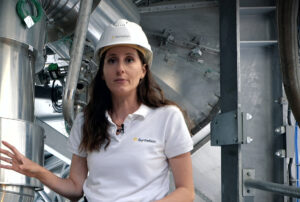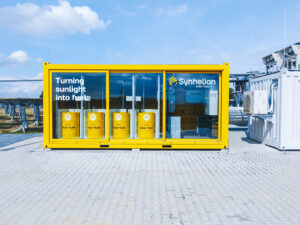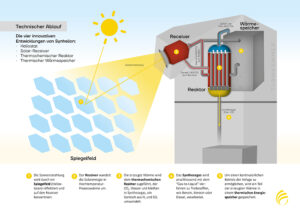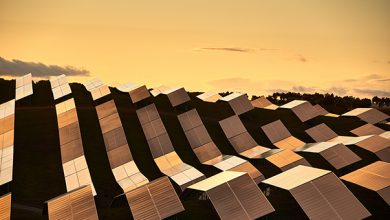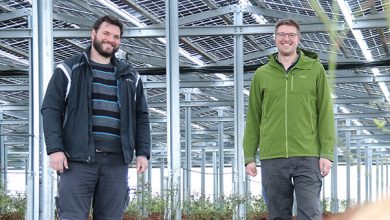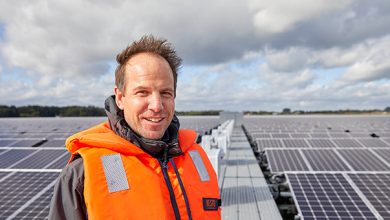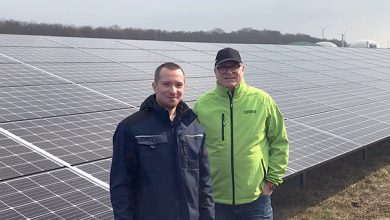Liquid fuels from light and air – this is no longer just a vision. The Swiss start-up Synhelion has put a plant into operation that bundles the power of the sun so successfully that the energy generated can be used to produce fuels on an industrial scale.

Everything is actually quite simple. After all, almost everyone knows the trick with the burning glass. If a magnifying glass is held up to the sun and its focal point is focused on a sheet of paper, the paper starts to burn after a short time. The concentrated energy of the sun becomes so hot that the flash point is reached.
Solar tower power plants use this principle. With mirrors and a tower that is significantly higher than you can hold a burning glass. The trackable mirrors direct the reflected sun rays onto the tower. In Jülich, North Rhine-Westphalia, such a solar tower has been rising a good 20 meters into the air since June 2024. At its feet is an armada of mirrors, known as heliostats. These can be aligned in such a way that they focus the reflected sun rays on a spot at the top of the tower. This is where the receiver is installed, which converts the solar energy into high-temperature process heat. The solar energy that is concentrated in this way generates temperatures of more than 1,550° C. “That is actually a world record,” explains Carmen Murer. She should know, as she is the press spokesperson for the Swiss company Synhelion.

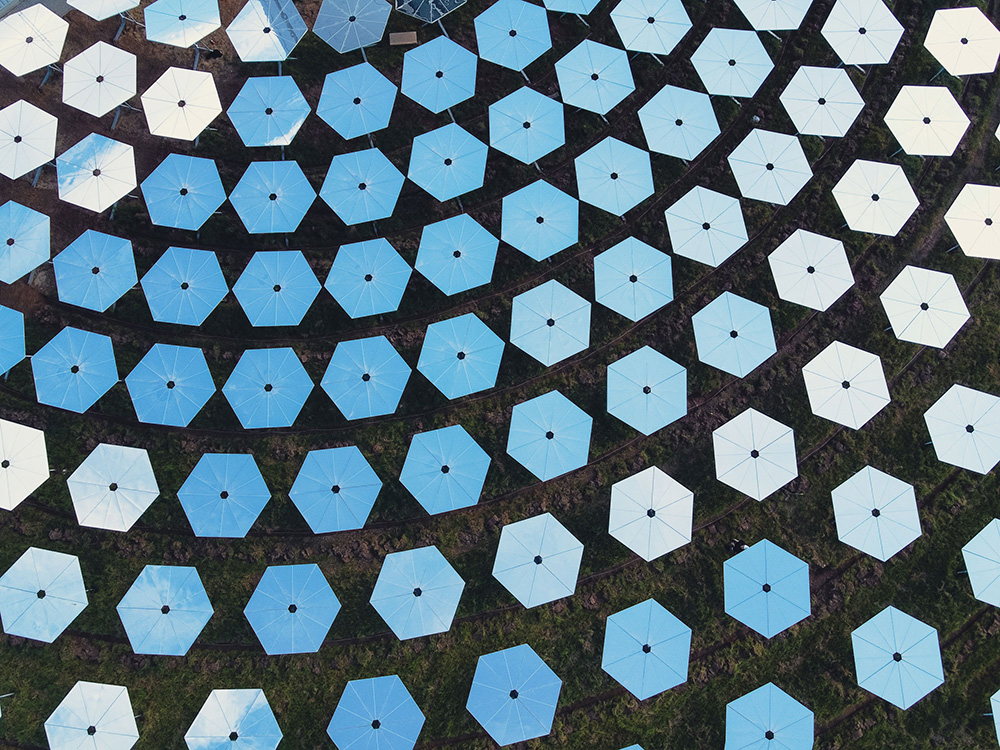
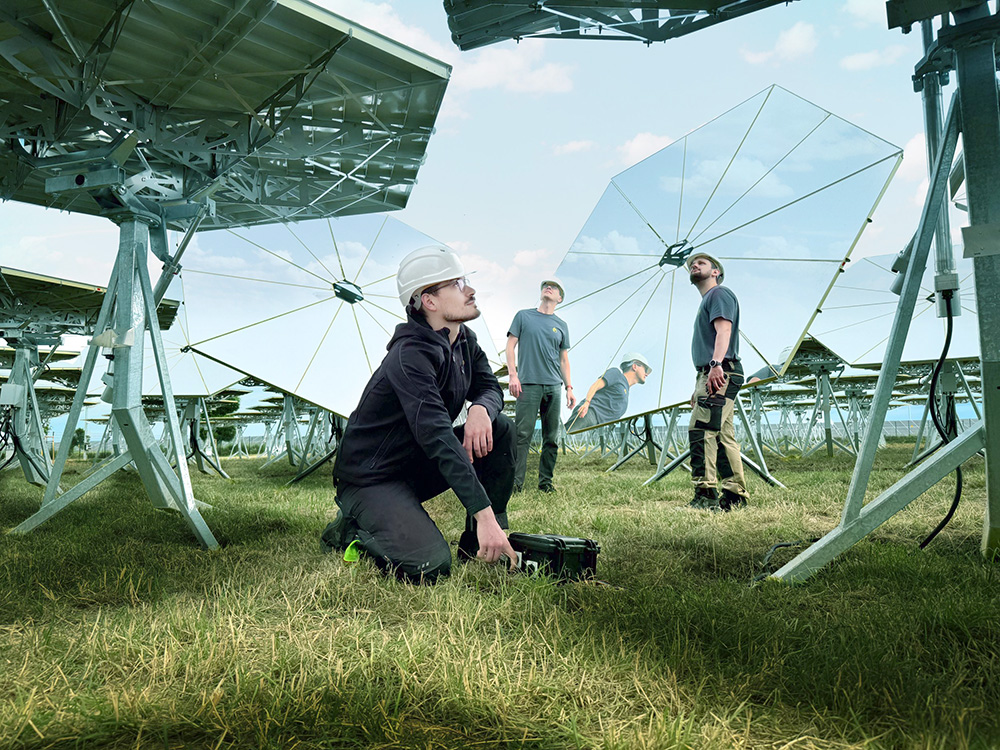
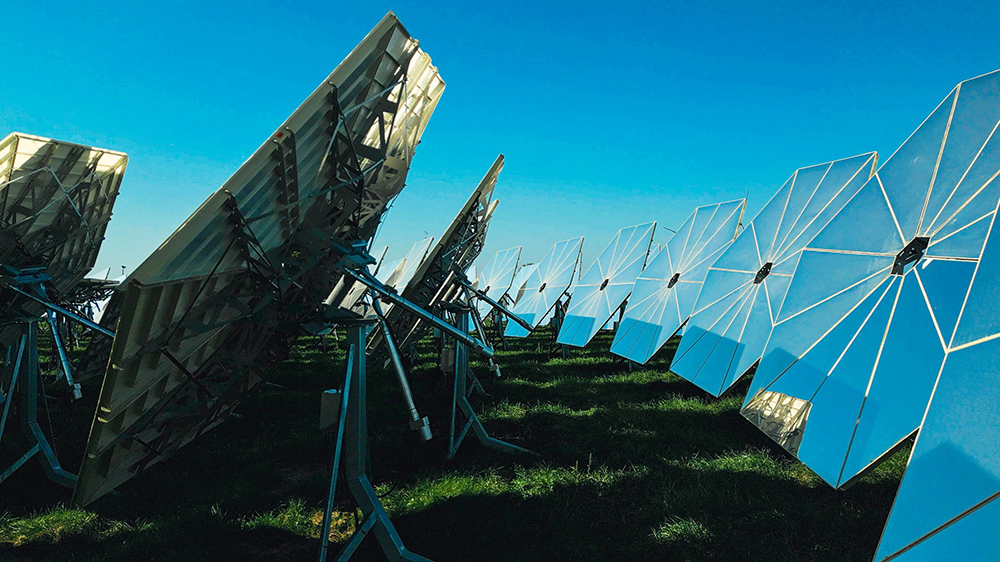
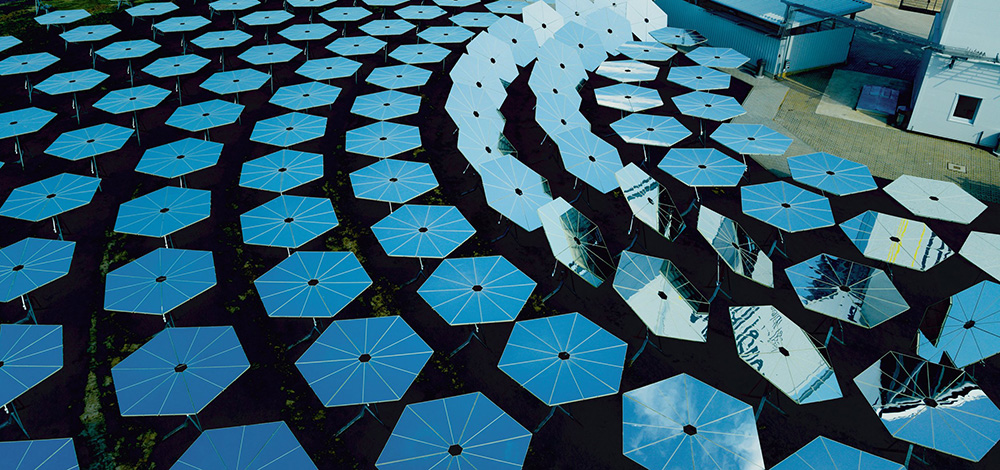
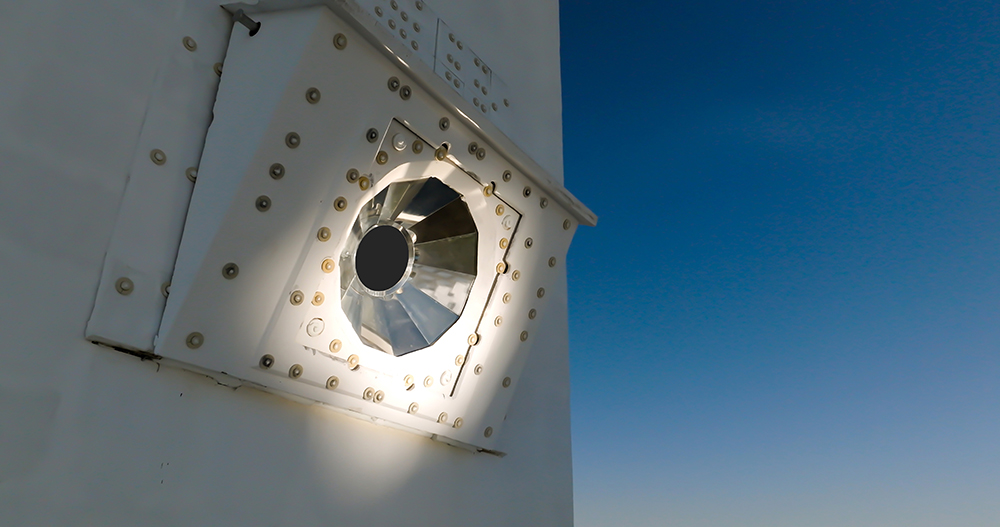
Synhelion is a spin-off from the Federal Institute of Technologyule (ETH) in Zurich. As early as 2010, the synthesis of hydrocarbon molecules with concentrated solar power was successful in a laboratory application. In 2014, solar kerosene was obtained for the first time in the laboratory exclusively from the components CO2 and H2O. In 2016, the two scientists Dr. Gianluca Ambrosetti and Dr. Philipp Furler then founded Synhelion SA with the addition “Solar Fuels”. Following successful open-field experiments, the construction of “DAWN”, the first demonstration plant for the industrial production of solar fuels, began in 2022. Jülich was also chosen as a location because Synhelion works closely with colleagues at the German Aerospace Center (DLR). There is also a second solar tower, unique in the whole of Northern Europe, which is used by DLR scientists for research purposes.
The captured heat is fed into a thermochemical reactor. There, a synthesis gas is produced from CO2, water and methane, which consists of H2 and CO. This synthesis gas is liquefied in a “gas-to-liquid” process. The liquid solar crude oil is then further processed in a normal refinery. In addition to kerosene as the largest component, petrol and diesel can also be produced in this way.
CO2 and methane are supplied by a biogas plant at the Jülich facility. In the future, there are plans to feed the required carbon source from industrially filtered CO2. A direct air capture plant (DAC) of this kind was developed by the company Climeworks, also a start-up from the Swiss innovation hub ETH Zurich.
The energy that is not needed immediately is transferred to an energy storage unit with a ceramic interior and is then available when the sun goes down. In this way, the Swiss new entrepreneurs achieve continuous 24/7 production without interruption. According to Synhelion, it is also around ten times cheaper than a comparable battery-electric energy source.
“Synhelion has created or further developed four areas of technology,” says Carmen Murer, describing the innovative strength of the Swiss team. “We developed the heliostats, the solar receiver, the thermochemical reactor and the thermal heat storage unit.” The Swiss have registered a total of 20 patent families to protect their inventions.
“The world will continue to rely on liquid fuels for the time being. In aviation, for example, battery-electric drives do not yet make sense. Our renewable solar fuels, on the other hand, can directly replace fossil fuels and only emit as much CO2 when burned as was absorbed in their production.”
Both DAWN and the RISE solar tower power plant to be built in Spain from 2025 are still relatively small plants. But Carmen Murer is certain: “Our technology is globally scalable and our renewable fuels offer an important solution in the fight against climate change. However, we will scale up gradually, as the plants would otherwise not be financially viable.” Synhelion expects to be able to produce around one million tons of kerosene in ten years. “Initially, we will also build and operate the plants ourselves. Then it is planned that Synhelion will only act as a technology provider and energy companies will take over production. The investment in the construction of these plants is very high. However, the subsequent production costs are very low,” says Carmen Murer, describing the hurdles and opportunities for a rapid expansion of the technology.
The products made of light and air are already in high demand: Swiss International Air Lines is just one of the cooperation partners of the Swiss innovators. There are concrete purchase agreements with the aircraft manufacturer Pilatus. The solar diesel is intended to help a Swiss operator of historic steamships to move forward. And pure thermal process energy is also inspiring new ideas – the cement manufacturer Cemex is already conducting successful trials with solar cement. But for now, the Swiss are primarily interested in the dream of flying – with light and air.
